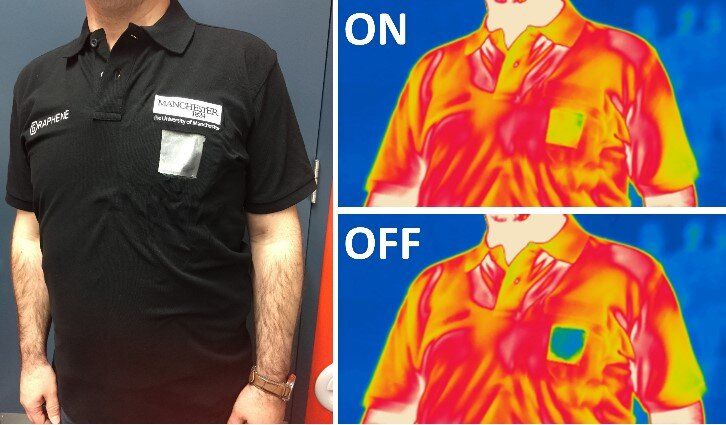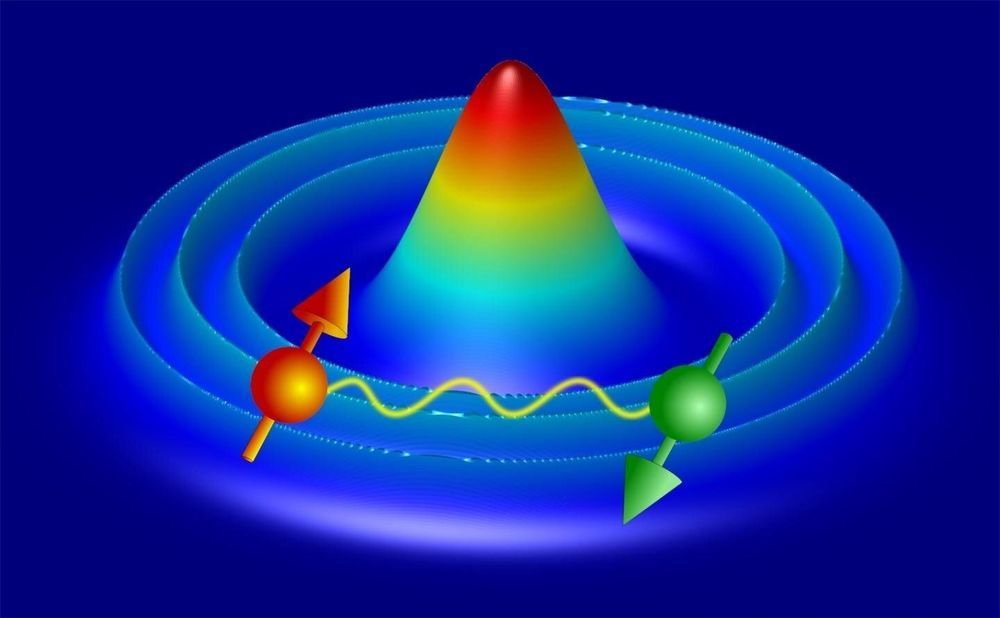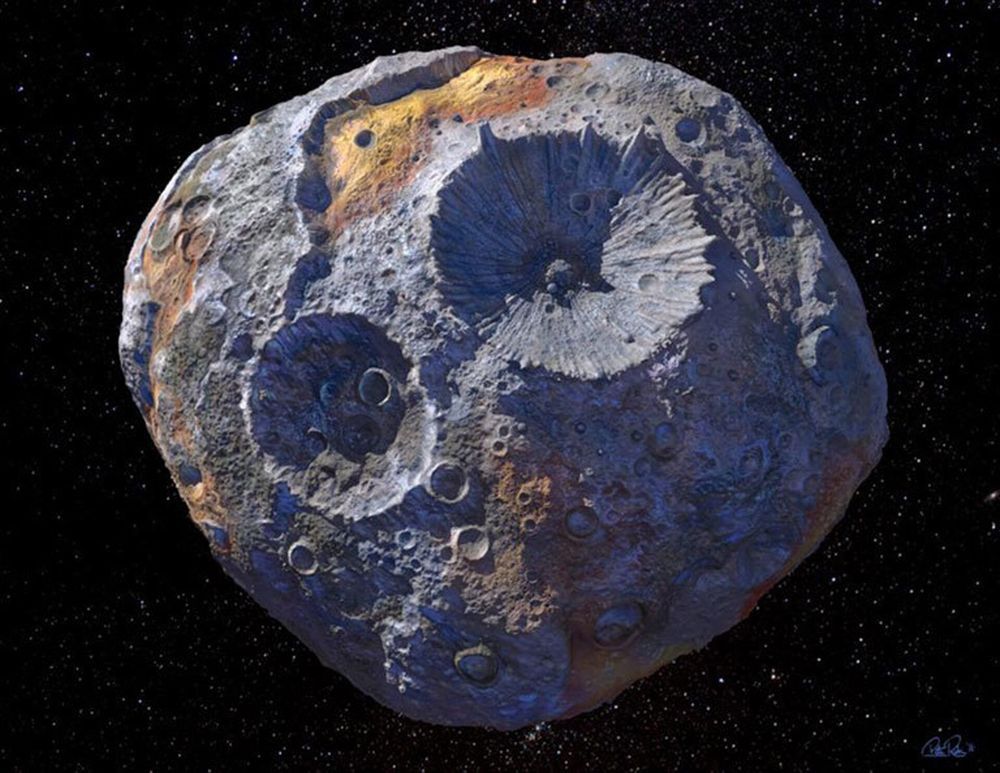Page 6393
Jun 18, 2020
Graphene smart textiles developed for heat adaptive clothing
Posted by Quinn Sena in categories: biotech/medical, materials
New research on the two-dimensional (2-D) material graphene has allowed researchers to create smart adaptive clothing which can lower the body temperature of the wearer in hot climates.
A team of scientists from the University of Manchester’s National Graphene Institute have created a prototype garment to demonstrate dynamic thermal radiation control within a piece of clothing by utilising the remarkable thermal properties and flexibility of graphene. The development also opens the door to new applications such as, interactive infrared displays and covert infrared communication on textiles.
The human body radiates energy in the form of electromagnetic waves in the infrared spectrum (known as blackbody radiation). In a hot climate it is desirable to make use the full extent of the infrared radiation to lower the body temperature which can be achieved by using infrared-transparent textiles. As for the opposite case, infrared-blocking covers are ideal to minimise the energy loss from the body. Emergency blankets are a common example used to deal with treating extreme cases of body temperature fluctuation.
Jun 18, 2020
Scientists reveal a lost eight billion light years of universe evolution
Posted by Quinn Sena in categories: cosmology, evolution, physics
Last year, the Advanced LIGO-VIRGO gravitational-wave detector network recorded data from 35 merging black holes and neutron stars. A great result—but what did they miss? According to Dr. Rory Smith from the ARC Centre of Excellence in Gravitational Wave Discovery at Monash University in Australia—it’s likely there are another 2 million gravitational wave events from merging black holes, “a pair of merging black holes every 200 seconds and a pair of merging neutron stars every 15 seconds” that scientists are not picking up.
Dr. Smith and his colleagues, also at Monash University, have developed a method to detect the presence of these weak or “background” events that to date have gone unnoticed, without having to detect each one individually. The method—which is currently being test driven by the LIGO community—” means that we may be able to look more than 8 billion light years further than we are currently observing,” Dr. Smith said.
“This will give us a snapshot of what the early universe looked like while providing insights into the evolution of the universe.”
Jun 18, 2020
Honeywell will let other companies tap into its quantum computer
Posted by Quinn Sena in categories: computing, quantum physics
Jun 18, 2020
Climate emission killer: construction begins on world’s biggest liquid air battery
Posted by Quinn Sena in categories: climatology, sustainability
Jun 18, 2020
OpenAI’s New Text Generator Writes Even More Like a Human
Posted by Quinn Sena in categories: information science, robotics/AI
The data came from Common Crawl, a non-profit that scans the open web every month and downloads content from billions of HTML pages then makes it available in a special format for large-scale data mining. In 2017 the average monthly “crawl” yielded over three billion web pages. Common Crawl has been doing this since 2011, and has petabytes of data in over 40 different languages. The OpenAI team applied some filtering techniques to improve the overall quality of the data, including adding curated datasets like Wikipedia.
GPT stands for Generative Pretrained Transformer. The “transformer” part refers to a neural network architecture introduced by Google in 2017. Rather than looking at words in sequential order and making decisions based on a word’s positioning within a sentence, text or speech generators with this design model the relationships between all the words in a sentence at once. Each word gets an “attention score,” which is used as its weight and fed into the larger network. Essentially, this is a complex way of saying the model is weighing how likely it is that a given word will be preceded or followed by another word, and how much that likelihood changes based on the other words in the sentence.
Through finding the relationships and patterns between words in a giant dataset, the algorithm ultimately ends up learning from its own inferences, in what’s called unsupervised machine learning. And it doesn’t end with words—GPT-3 can also figure out how concepts relate to each other, and discern context.
Jun 18, 2020
Quantum rings in the grip of laser light
Posted by Quinn Sena in categories: particle physics, quantum physics
Ultracold atoms trapped in appropriately prepared optical traps can arrange themselves in surprisingly complex, hitherto unobserved structures, according to scientists from the Institute of Nuclear Physics of the Polish Academy of Sciences in Cracow. In line with their most recent predictions, matter in optical lattices should form tensile and inhomogeneous quantum rings in a controlled manner.
An optical lattice is a structure built of light, i.e. electromagnetic waves. Lasers play a key role in the construction of such lattices. Each laser generates an electromagnetic wave with strictly defined, constant parameters which can be almost arbitrary modified. When the laser beams are matched properly, it is possible to create a lattice with well known properties. By overlapping of waves, the minima of potential can be obtained, whose arrangement enables simulation of the systems and models well-known from solid state physics. The advantage of such prepared systems is the relatively simple way to modify positions of these minima, what in practice means the possibility of preparing various type of lattices.
“If we introduce appropriately selected atoms into an area of space that has been prepared in this way, they will congregate in the locations of potential minima. However, there is an important condition: the atoms must be cooled to ultra-low temperatures. Only then will their energy be small enough not to break out of the subtle prepared trap,” explains Dr. Andrzej Ptok from the Institute of Nuclear Physics of the Polish Academy of Sciences (IFJ PAN) in Cracow.
Jun 18, 2020
NASA headed towards giant golden asteroid that could make everyone on Earth a billionaire
Posted by Quinn Sena in category: space
Jun 18, 2020
For First Time in Decades, Female Soldier Completes Final Phase of Special Forces Training
Posted by Quinn Sena in category: military
A female National Guard soldier has successfully completed the final stage of the Army’s Special Forces Qualification Course (Q Course), but she’s not a Green Beret yet.
The soldier finished the grueling three-week evaluation known as Robin Sage this week, but she is still in the final counseling phase, in which she and other students receive evaluations from course staff, Lt. Col. Loren Bymer, spokesman for U.S. Army Special Operations Command, told Military.com on Thursday.
Read Next: Marine Raider Dies During Airborne Training at Fort Benning.
Jun 18, 2020
Slightly Unnerving AI Produces Human Faces Out of Totally Pixelated Photos
Posted by Shailesh Prasad in category: robotics/AI
Artificial intelligence networks have learnt a new trick: being able to create photo-realistic faces from just a few pixelated dots, adding in features such as eyelashes and wrinkles that can’t even be found in the original.
Before you freak out, it’s good to note this is not some kind of creepy reverse pixelation that can undo blurring, because the faces the AI comes up with are artificial – they don’t belong to real people. But it’s a cool technological step forward from what such networks have been able to do before.
The PULSE (Photo Upsampling via Latent Space Exploration) system can produce photos with up to 64 times greater resolution than the source images, which is 8 times more detailed than earlier methods.

















